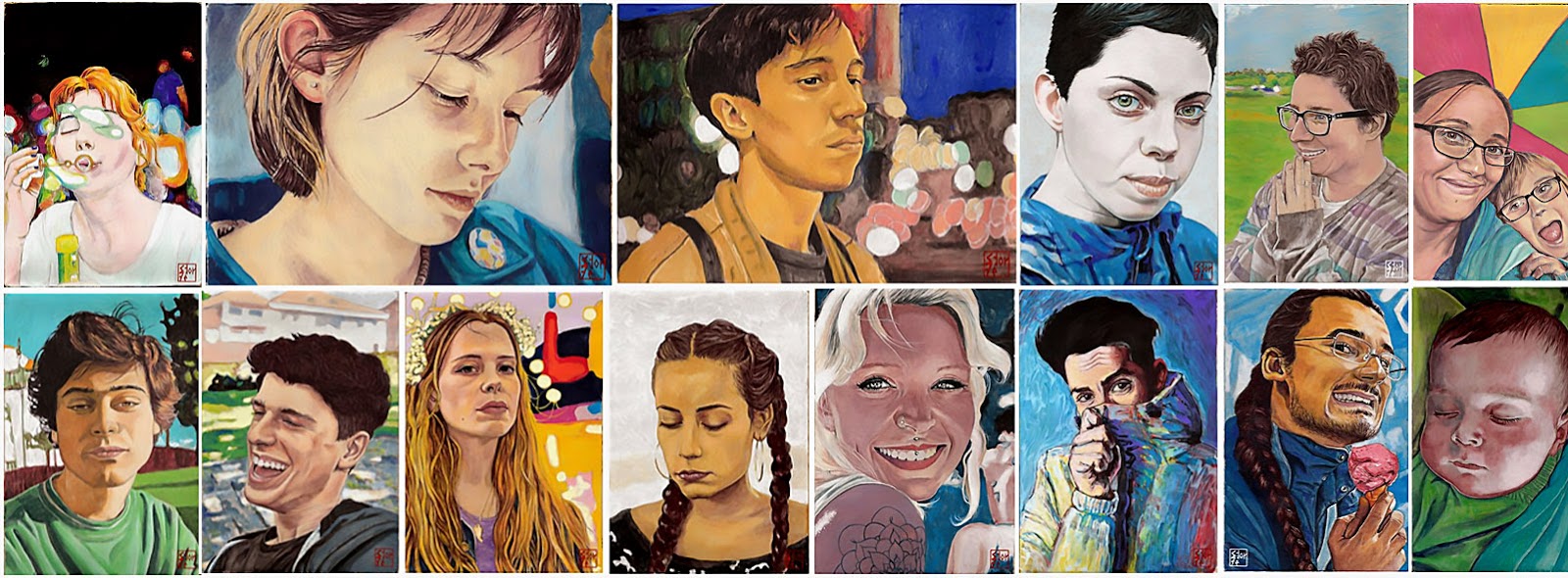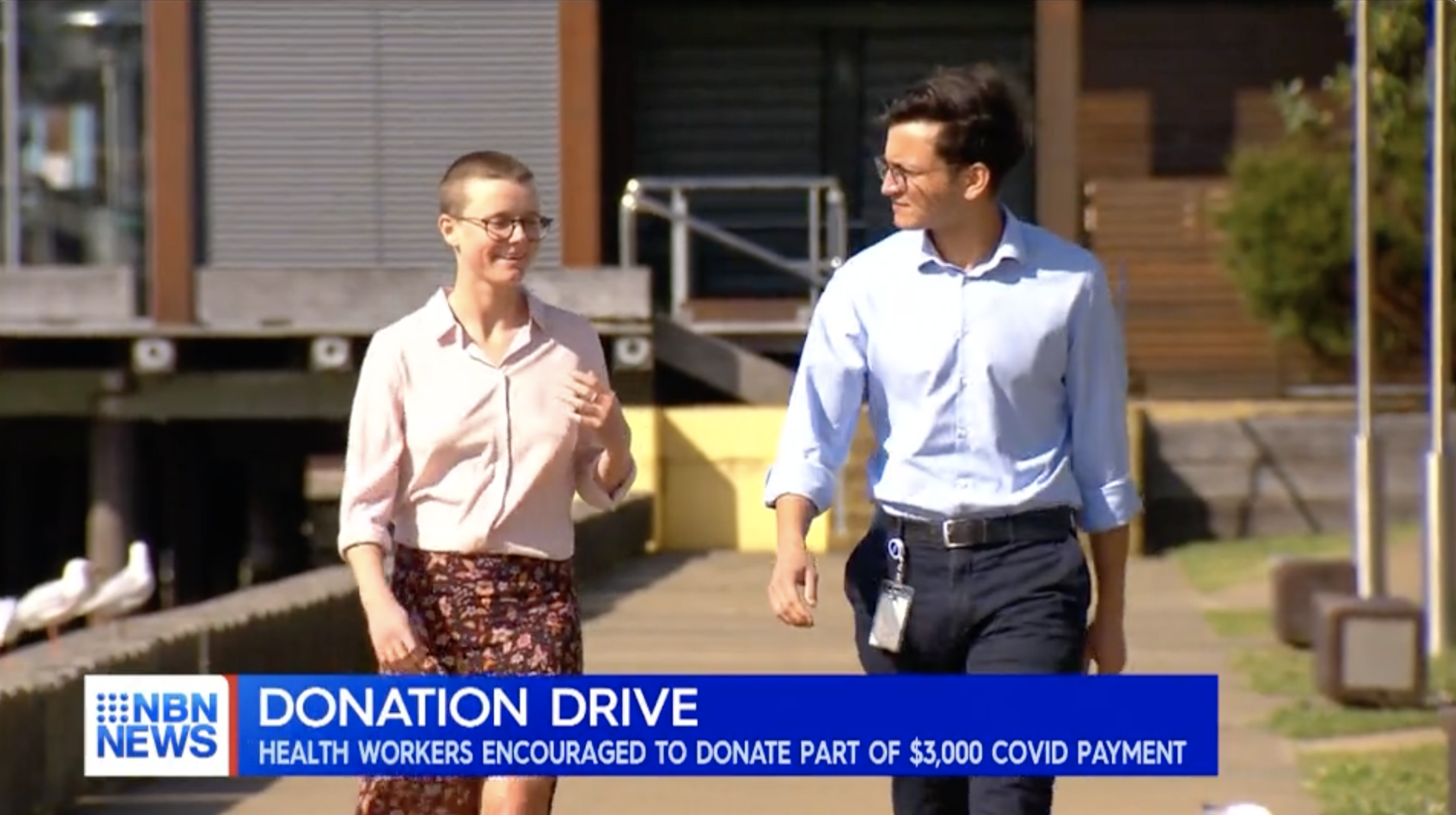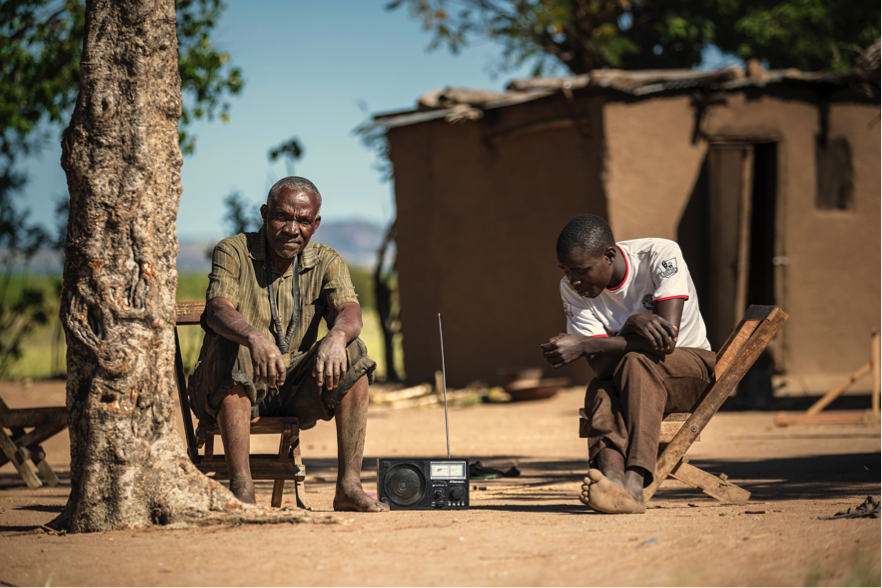“Many people in poor countries suffer from a condition called trachoma. Trachoma is the major cause of preventable blindness in the world. Trachoma starts with bacteria that get in the eyes of children, especially children living in hot and dusty conditions where hygiene is poor. If not treated, a child with trachoma bacteria will begin to suffer from blurred vision and will gradually go blind, though this process may take many years. A very cheap treatment is available that cures the condition before blindness develops. As little as $25, donated to an effective agency, can prevent someone from going blind later in life.
“How much would you pay to prevent your own child from becoming blind? Most of us would pay $25,000, $250,000, or even more, if we could afford it. The suffering of children in poor countries must matter more than one-thousandth as much as the suffering of our own child. That’s why it is good to support one of the effective agencies that are preventing blindness from trachoma, and need more donations to reach more people.”
Recently a study set out to find the most convincing argument to lead people to give to charity, and the one above was the winner. Maybe not surprisingly this argument was co-authored by one of the most prominent ethicists who has written about poverty since the 1970s, and whom many consider to be the “father of Effective Altruism“ (EA): Peter Singer. Do you think this argument is enough to change our habits or the way we are?
As long as I can remember there are two things I’ve wanted to be: a painter and a good person. Little did I know that, because of the writings of Peter Singer, there would be a time I would find it impossible to be both at the same time. But maybe I should explain myself, and I’ll do so by again using Peter Singer’s ideas: If by any chance an evil demon would make 1 person blind in every 1,000 that entered a museum wing, would you enter that museum wing? Even if you are, like me, an art lover I’m guessing you’d rather enter another museum wing (without such an evil demon), or go to a totally different museum. Well, this should show you that you value your sight 1,000 times more than the experience you would have in that museum wing. And if you had to choose between donating to build that museum wing or donating to save someone from losing their sight, then you should also value the latter more, because your money would provide many times more good.
Make good deeds not art?
By now you must be guessing that someone using his time to provide art experiences to others would find himself in a pickle. Well, I’ve been an art teacher for almost 25 years, so you might say I’ve accomplished a part of my childhood dream. But in 2011 when Peter Singer’s book The Life You Can Save was published here in Portugal, I read it and that prompted me to start volunteering all my free time to promote the organization Peter Singer founded with the same name as the book. Since then I’ve stopped painting almost completely, but I’ve had some of the most accomplishing moments of my life.
What about my childhood dream?
I had two, remember? And I was living one dream to a greater extent: the last time I wrote a blog post for The Life You Can Save, 3 years ago, it went further than I could have imagined in my wildest dreams: it became the first post from a Portuguese-speaking effective altruist to be featured in the EA Newsletter, and it was shared widely. And, just when I thought things couldn’t get any better, the post was shared by Peter Singer himself! Ok, this might be a tremendous thing to boost one’s ego, but, believe it or not, the best was yet to come: while representing EA here in Portugal, I was informed that two Portuguese people took the Giving What We Can (GWWC) pledge. Do you know what this means? It means that somehow my work got two people to make the decision of donating at least 10% of their lifelong earnings to organizations that can do the most good with it. Can you imagine the amount of good this could accomplish? With just one blog post?!
Could I have found “the most good I could do”?
Can you believe I spent the better part of one year trying to answer this question? I teamed up with a few friends in my small EA Group here in Porto, and we began by ranking all of our EA activities according to their impact. But things like translating texts for our EA Website (Brazil and Portugal) or other ways of promoting EA — be it on social media, be it on our monthly meetings, or in public presentations, etc. — were so hard to compare, especially for the lack of hard evidence of their impact. Every time we tried to rank our activities, we had a different result. Then we thought: maybe breaking this big problem into smaller ones would help. So I brought on my teacher’s evaluating experience and thought of some criteria to grade each activity — criteria such as the cost of implementing each one (considering time and other resources), its impact (immediate and in the long run), the individual benefits to the implicated people (the agents and the beneficiaries), and the possibility to successfully replicate them in the future (scalability). But we went even a step further to refine this evaluation, and to each criterion we associated a probability rate of being right in that assessment. Because when you’re making hard judgments (like picking a charity where to donate) it seems very useful to have a more nuanced scale of (un)certainty. And then, even better, one should try to express that (un)certainty numerically, for instance like this:
| What’s my probability of being right? | ||
|---|---|---|
| In words | In numbers | In colors |
| Absolutely Certain | 100% | |
| Almost Certain | 85% – 99% | |
| Probable | 60% – 84% | |
| Chances About Even | 40% – 59% | |
| Probably Not | 15% – 39% | |
| Almost Certainly Not | 1% – 14% | |
| Totally Uncertain | 0% | |
Adapted from Sherman Kent’s Words of Estimative Probability. See here.
Over 6 months evaluating?! What was the result?
Sometimes what seems very good at first glance doesn’t seem so good when you look closely. And that turned out to be the case for the two lifelong donors inspired by my blog post. Let me explain why: It would be a tremendous coincidence if those two people just took the giving pledge at the same time I wrote the post, but it would also be a tremendous coincidence if they took the pledge exclusively because I wrote the post. More likely, the post only had a small influence (say 5%-10%) to make them decide to do it sooner (say 1-3 months sooner). Even so, for a blog post, that’s very good, isn’t it? Well, even if an effective donation of such a small fraction of 10% of a month’s salary might go a long way (remember the 10% GWWC pledge?), that kind of an outcome was very hard to replicate — even more so when you’re not a writer and post only once every 3 years!
Fortunately, sometimes when you look closely, what seems not so good at first glance turns out to be very good.
“Not so good” = “Very good”: What could that be?
At one point a couple of artist friends were promoting their “homemade” art gallery and invited me to do an exhibition. Far away from my childhood dream, I agreed to participate in what I thought to be the shortest artist’s career ever: starting and ending with one exhibition. And I agreed to that because they agreed all the proceedings would be donated to an effective charity: The Against Malaria Foundation (AMF). Bottom line: I spent my free time painting and then 29 people purchased 53 art prints and their donations bought 225 nets to protect 405 people from one of the deadliest diseases in the world.
Knowing that the art market isn’t thriving with art galleries that would embrace such a nonprofit project (art for effective donations), I washed my brushes for the last time and put them away. We at the EA group looked at this as a one-time fluke and also set it aside. But time and time again we realized that the idea scored so well in our evaluation that maybe it would be worth thinking about a different way to replicate it.
Make art and good deeds?
All through this time, I struggled against my personal bias towards the arts, feeling that if I had to choose from my two childhood dreams, I should never choose to self-indulge. But what if those dreams weren’t mutually exclusive after all?
Peter Singer has often used the arts as an example of where not to put your money in a world with so much avoidable suffering when that same money can make a big difference. But he has also talked about what an artist can do with his talent to help others, especially waking us up to the situation of the world we are living in. And it also stuck with me when I heard another renowned moral philosopher, Derek Parfit, say that being an artist could be an EA career, as long as you had enough profit and carried out the plan of earning to give. And even if I didn’t have in my immediate plans the idea of becoming a wildly successful artist, when another friend asked me to make him a portrait, I began to realize that the excuse that I couldn’t do it because I was doing something more important wasn’t necessarily true. If I made him a portrait in exchange for a donation to AMF, that could have a greater positive impact than most things I could be doing. And when my friend asked me for a reasonable donation amount, I thought: Even if I just work for minimum wage, that would roughly mean three malaria bed nets for an hour’s work! Imagine if every hour you spent doing your personal hobby (going to the gym, playing video games, tweeting, etc.) would result in 6 people being protected from a deadly disease. That’s surely a “reasonable value”!
So, what is “the most good YOU can do”?
We are all so different, and that’s why this question is so hard to answer. Even as a teacher, I’ve long stopped advising my students about which path they should follow. From my perspective, the best you can do is to learn as much as you can so that you can choose well for yourself in the face of so much (sometimes contradictory) information. Some of the most beneficial tools to make those kinds of choices —like the commitment to others, a scientific mindset, openness, integrity and a collaborative spirit— are precisely the EA guiding principles. And something wonderful about the EA movement is that it helps you to find the answer to that question in many different ways: be it by providing free counseling to help you have a greater impact with your career (80,000 Hours), helping you evaluate charities (GiveWell), promoting the most effective charities (The Life You Can Save) so you can easily find the best opportunities to have the greatest impact through effective giving, helping you keep your commitment by being part of a community (GWWC), and always keeping you informed with the most recent research and updated discussions to figure out how to benefit others as much as possible, and taking action on that basis (EA Forum).
Either way, there’s something that never ceases to amaze me: the thought that one person alone in a room, doing what he loves, starting with a thin line in a piece of paper, sets a complex process in motion that, in the course of 4 years, protects over 2,500 people from a deadly disease on the other side of the planet! Using only his free time! Isn’t this sufficient evidence that you should carefully think about what is “the most good you can do”?
This is the answer I came up with:
What is yours?
Author’s Note: I would like to thank Rosa Costa, Luis Campos and especially Adam Sneed for helping me to improve my English, making it possible for me to state my ideas more clearly.



